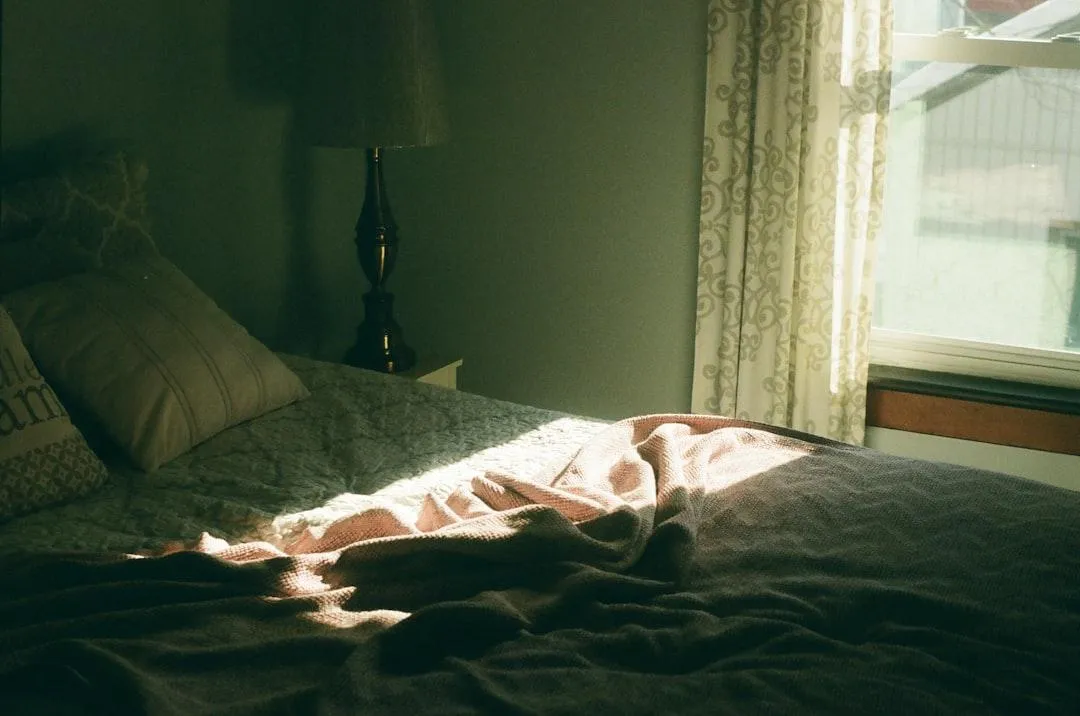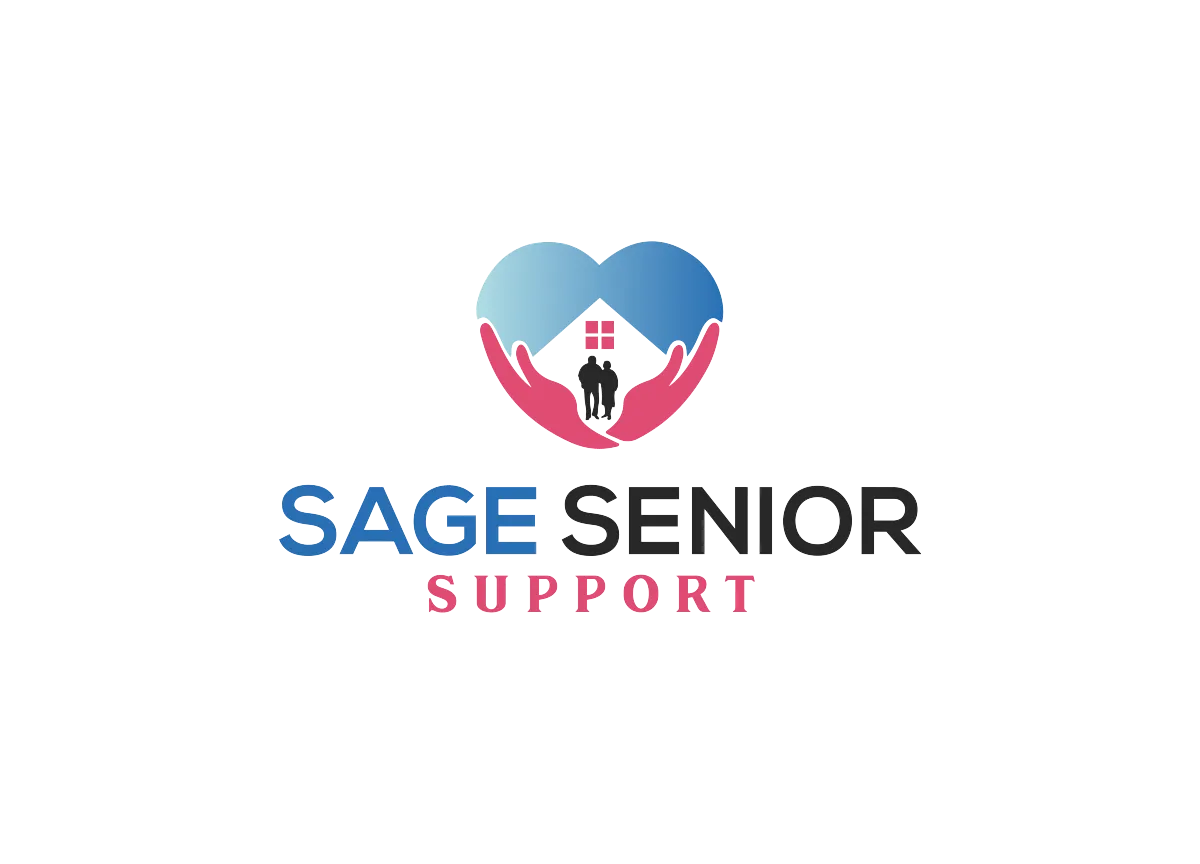
Senior Fall Crisis: Breaking the Cycle of Fear, Isolation, and Declining Health
Falls affect 1 in 4 older Americans annually, creating a devastating cycle where fear leads to activity restriction, physical decline, and increased fall risk. Simple home modifications and support services like Sage Senior Support can break this dangerous cycle and restore seniors' independence.
Key Takeaways
Falls affect one in four older Americans annually, causing 38,000 deaths in 2021 and creating a devastating cycle of fear, isolation, and declining health.
The fear of falling often leads seniors to limit their activities even without experiencing an injury, resulting in physical deconditioning that actually increases fall risk.
Multiple risk factors contribute to falls, including vision and hearing impairments - with hearing loss nearly tripling fall risk, while wearing hearing aids can reduce that risk by 50%.
Simple home modifications and safety measures can significantly reduce fall risk while restoring seniors' confidence and independence.
Sage Senior Support provides comprehensive solutions to help break this dangerous cycle through personalized fall prevention strategies.
The Devastating Spiral: How One Fall Changes Everything
Falls represent the leading cause of both fatal and non-fatal injuries for adults over 65, affecting one in four older Americans—approximately 14 million people—each year. In 2021 alone, falls claimed 38,000 lives among older adults, a statistic that fails to capture the countless others who survived falls but experienced dramatically diminished quality of life.
What makes falls particularly insidious is how a single incident triggers a dangerous downward spiral that extends far beyond physical injury. Specialists at Sage Senior Support have observed this pattern consistently in their work with older adults: one fall creates a pervasive fear that leads to self-imposed activity restriction, which then accelerates physical decline, deepens social isolation, and ultimately increases the likelihood of future falls.
The psychological impact of falls is as significant as the physical injuries they cause. Fear of falling can be equally debilitating, creating a cycle that dramatically accelerates functional decline in seniors.
Understanding the Fear-Isolation-Decline Cycle
1. How Fear Restricts Activity Even Without Injury
Perhaps the most troubling aspect of falls is that physical injury isn't required to trigger functional decline. Research confirms that the mere fear of falling can prompt older adults to drastically limit their activities. This self-imposed restriction occurs even among seniors who have never fallen but have developed anxiety about the possibility.
2. Social Withdrawal as a Secondary Effect
As activity levels decline, social interaction naturally diminishes. Seniors may stop attending religious services, family gatherings, or community events. This withdrawal isn't merely a quality-of-life issue—social isolation itself becomes a significant health risk, associated with increased rates of depression, cognitive decline, and further physical deterioration.
3. The Physical Consequences of Self-Limitation
When seniors restrict their movement due to fear, their bodies quickly begin to decondition. Muscle mass decreases, joints stiffen, and cardiovascular capacity diminishes. This physical decline creates a cruel paradox: the very actions taken to prevent falls—limiting activity—actually increase fall risk by weakening the body's natural stability systems.
4. Depression and Anxiety: The Emotional Toll
The combination of physical limitation and social withdrawal frequently leads to depression and anxiety. These emotional states further compound fall risk, as depression can affect concentration, sleep patterns, and medication adherence—all critical factors in maintaining stability and preventing falls.
Risk Factors Creating the Perfect Storm
Falls rarely have a single cause. Instead, they typically result from a confluence of risk factors that create a "perfect storm" of vulnerability. Understanding these factors is essential for effective prevention.
1. Age-Related Physical Changes
The natural aging process brings physical changes that can affect balance and stability:
Decreased muscle mass and strength
Reduced joint flexibility
Diminished reaction time
Changes in gait and posture
Decreased bone density, increasing fracture risk
2. Medical Conditions That Compromise Balance
Numerous health conditions can significantly increase fall risk:
Arthritis (affecting joint stability and movement)
Parkinson's disease (impacting balance and coordination)
Stroke (causing weakness or paralysis on one side)
Diabetes (potentially leading to peripheral neuropathy)
Heart conditions (possibly causing episodes of dizziness)
Cognitive impairment (affecting judgment and spatial awareness)
3. Medications That Significantly Increase Fall Risk
Many commonly prescribed medications can compromise balance and increase fall risk. These include:
Benzodiazepines
Antidepressants
Antipsychotics
Muscle relaxants
NSAIDs (Non-steroidal anti-inflammatory drugs)
Opioids
The risk escalates significantly with polypharmacy—taking multiple medications simultaneously—a common situation among older adults with chronic conditions.
4. Vision and Hearing Impairments: The 50% Solution
Sensory impairments dramatically increase fall risk:
Vision problems impair the ability to detect obstacles and judge distances
Hearing loss can nearly triple fall risk by reducing environmental awareness
Using appropriate hearing aids can reduce fall risk by up to 50%
Regular vision and hearing checkups are essential prevention measures
5. Home Hazards Most People Miss
The home environment itself can present numerous fall hazards that are often overlooked:
Poor lighting, especially in hallways and stairwells
Loose rugs and carpets
Clutter in walkways
Lack of grab bars in bathrooms
Slippery floors, particularly in bathrooms and kitchens
Electrical cords across walking paths
Uneven steps or thresholds
Breaking the Cycle With Proven Interventions
Fortunately, evidence-based interventions exist that can effectively break the cycle of fear, isolation, and decline. A comprehensive approach typically includes several components working in concert.
1. Home Modifications That Restore Confidence
Simple changes to the home environment can dramatically reduce fall risk while simultaneously increasing an older adult's confidence in navigating their space:
Bathroom safety measures: Install grab bars near toilets and in showers/tubs, use non-slip mats, and consider shower chairs
Improved lighting: Ensure bright, accessible lighting throughout the home, with particular attention to stairways, hallways, and nighttime pathways to bathrooms
Decluttering: Clear walking paths of furniture obstacles, cords, and loose items
Secure flooring: Remove or securely tape down loose rugs, repair uneven floorboards, and use non-slip treatments on slick surfaces
Stairway improvements: Install solid handrails on both sides of stairs and ensure adequate lighting
2. Exercise Programs Reducing Falls by Over 50%
Regular physical activity is one of the most effective interventions for fall prevention. Evidence-based exercise programs have demonstrated remarkable success:
Tai Chi: This gentle martial art has been shown to reduce falls by 58-67% in older adults through its focus on weight shifting, postural alignment, and mindful control of movements
Balance-specific training: Programs that focus specifically on balance challenges gradually increase difficulty as participants improve
Strength training: Building lower body strength, particularly in the legs and core, provides crucial stability
Flexibility exercises: Maintaining or improving range of motion helps prevent the stumbles that can lead to falls
The benefits extend beyond fall prevention to include improved mood, better sleep, enhanced cognitive function, and increased social engagement when done in group settings.
3. Strategic Medication Management
A thorough medication review can identify drugs that increase fall risk and lead to safer alternatives:
Work with healthcare providers to evaluate all medications, including over-the-counter drugs and supplements
Consider possible medication interactions that may affect balance or alertness
Look into alternatives to high-risk medications where possible
Adjust dosages or timing of necessary medications to minimize side effects
Use a single pharmacy to fill all prescriptions to help identify potential interactions
4. Sensory Optimizations Beyond Basic Corrections
Addressing vision and hearing impairments goes beyond just getting glasses or hearing aids:
Ensure eyeglass prescriptions are current and appropriate for different activities
Consider single-vision glasses for outdoor activities instead of bifocals or progressives, which can distort depth perception
Make sure hearing aids are properly fitted, maintained, and worn consistently - they can reduce fall risk by 50%
Address cataracts, glaucoma, and other treatable vision conditions promptly
Creating Your Safety Net
Medical Alert Systems: What Actually Works
For many older adults, medical alert systems provide critical peace of mind and emergency response capability:
Automatic fall detection: Advanced systems can detect falls without requiring the user to press a button, crucial if the person loses consciousness
GPS capability: Systems with location tracking can summon help even when the person is away from home
Water-resistant options: Since bathrooms are common fall locations, devices should be able to withstand exposure to water
Battery life considerations: Longer battery life reduces the chance of the device being uncharged when needed
When and How to Seek Professional Help
Knowing when to involve healthcare professionals is crucial:
After any fall, even if it seems minor
When experiencing dizziness, balance problems, or increasing fear of falling
When starting new medications or experiencing new health issues
When considering significant home modifications
Building Your Fall Prevention Team
1. Physicians: Effective Communication Strategies
Primary care doctors play a central role in fall prevention, but effective communication is essential:
Be honest and thorough about any falls or near-falls
Keep a medication list to review at each appointment
Ask specifically about fall risk when discussing new medications
Request a fall risk assessment if one hasn't been offered
2. Therapists: More Than Just Exercise
Physical and occupational therapists provide specialized expertise:
Physical therapists: Assess gait, balance, and strength; design customized exercise programs; and provide training for safe mobility
Occupational therapists: Evaluate how individuals perform daily activities, recommend adaptive equipment, and suggest home modifications
3. Pharmacists: Your Medication Safety Allies
Pharmacists offer valuable medication expertise:
Review all medications specifically for fall risk factors
Suggest safer alternatives where possible
Provide guidance on optimal medication timing
Alert you to potential interactions between prescriptions and over-the-counter products
From Fear to Freedom: Reclaiming Senior Independence
The fall crisis facing older adults is serious—with 3 million emergency department visits and 1 million hospitalizations annually, and healthcare costs reaching $80 billion in 2020. But these statistics don't capture the human cost: the independence lost, the social connections severed, the joy of movement abandoned.
Yet this crisis is not inevitable. By understanding the cycle of fear, isolation, and decline—and implementing proven interventions to break it—older adults can maintain their independence, confidence, and quality of life.
The key lies in addressing multiple risk factors simultaneously through a comprehensive approach that includes home modifications, appropriate exercise, medication management, sensory optimization, and engagement with knowledgeable healthcare professionals.
With the right support and strategies, seniors can move from fear to freedom, reclaiming the active, engaged lifestyle that supports both physical health and emotional wellbeing.
Sage Senior Support specializes in comprehensive fall prevention programs designed to help seniors break free from the cycle of fear and reclaim their independence with confidence.


